S-class: Difference between revisions
Pbcjohnston (talk | contribs) mNo edit summary |
Pbcjohnston (talk | contribs) Fixed formatting |
||
| (9 intermediate revisions by the same user not shown) | |||
| Line 1: | Line 1: | ||
[[File:S- | {{#seo:|title=S-class submarines U.S. Navy - PigBoats.COM|title_mode=replace|keywords=S-boat, sugar boat, US S-class submarine}} | ||
{{#seo:|description=Notes, photographs, and pictures of the U.S. Navy's S-class submarines.}} | |||
[[File:New Header EB S-boats.jpg]] | |||
=== <big>Design and Construction Notes</big> === | === <big>Design and Construction Notes</big> === | ||
<div style="text-align: justify;"><span style="color:#00008B">The 51 S-class open ocean patrol submarines marked the transition away from the harbor and coastal defense strategic concept that had dominated USN submarine doctrine since 1900. The concept that drove their design was offensive in nature, with the intention of having the S-class cross the Atlantic to carry the fight to a potential enemy. Significantly, this class also marked the emergence of the USN as its own design agent, with 19 of the boats built to a design developed for the first time by the Navy's Bureau of Construction & Repair. This effectively ended the Navy's reliance on private contractors for submarine design work, forever altering the established paradigm of submarine acquisition. They were built to five distinctly different designs with several variations at four different shipyards. The designs were from the Electric Boat Company (EB) of New York City (later Groton, CT.), the Lake Torpedo Boat Company (LTB) of Bridgeport, CT., and the Portsmouth Navy Yard in Kittery, ME. While similar in military and operational capability, the various designs were vastly different in installed equipment, interior arrangement, and external appearance and essentially the 51 boats were a class in name only. The details can be confusing, so if you are interested in sorting it all out, we highly recommend perusing the Visual Guide articles at this link: [https://pigboats. | <div style="text-align: justify;"><span style="color:#00008B">The 51 S-class open ocean patrol submarines marked the transition away from the harbor and coastal defense strategic concept that had dominated USN submarine doctrine since 1900. The concept that drove their design was offensive in nature, with the intention of having the S-class cross the Atlantic to carry the fight to a potential enemy. Significantly, this class also marked the emergence of the USN as its own design agent, with 19 of the boats built to a design developed for the first time by the Navy's Bureau of Construction & Repair. This effectively ended the Navy's total reliance on private contractors for submarine design work, forever altering the established paradigm of submarine acquisition. They were built to five distinctly different designs with several variations at four different shipyards. The designs were from the Electric Boat Company (EB) of New York City (later Groton, CT.), the Lake Torpedo Boat Company (LTB) of Bridgeport, CT., and the Portsmouth Navy Yard in Kittery, ME. While similar in military and operational capability, the various designs were vastly different in installed equipment, interior arrangement, and external appearance and essentially the 51 boats were a class in name only. The details can be confusing, so if you are interested in sorting it all out, we highly recommend perusing the Visual Guide articles at this link: [https://pigboats.com/index.php?title=Johnston,_David '''A Visual Guide to the S-class Submarines 1918-1945 Parts 1, 2, & 3''']. Also, we also have some of the pages from the General Information Book for the S-1. The book has some interesting data that is applicable to the EB design for the S-class. It can be found at this link: [[S-1 General Information Book 1924|'''S-1 General Information Book 1924''']]. | ||
This was the largest class of submarines built for the USN prior to WWII, and they became ubiquitous in every fleet operating area in the 1920's and 1930's. However, because they were a WWI design, they were rapidly aging by 1941. Due to a lack of modern fleet submarines, the extant S-boats were pressed into war service throughout the Pacific and western Atlantic. Many of them were in the thick of the fight against the Japanese from the first day of the war. The high intensity operations took a toll on them, with six (marked by a *) being lost. Three were lost to grounding, one to a collision with a friendly warship, one to hull failure during a training mission, and one loss to enemy action (S-44). The crew members that died in service are considered to be "on eternal patrol". | |||
The class is broken down by groups below. | |||
[[File:Red bar sub new 2.jpg]] | [[File:Red bar sub new 2.jpg]] | ||
<div style="text-align: justify;"><span style="color:#000000"> | |||
=== <big>S-1 and S-18 through S-29 (EB design built at Bethlehem Quincy)</big> === | === <big>S-1 and S-18 through S-29 (EB design built at Bethlehem Quincy)</big> === | ||
| Line 31: | Line 39: | ||
=== <big>S-10 through S-13 (Modified Government design built at Portsmouth Navy Yard)</big> === | === <big>S-10 through S-13 (Modified Government design built at Portsmouth Navy Yard)</big> === | ||
[[File:S-10 group.jpg|left|500px|Photo courtesy of the Naval History & Heritage Command.]]<div style="text-align: justify;"><span style="color:#00008B">S-13, S-10, and S-12 moored alongside the Balboa Docks, Panama, approximately 1935. Temporary canvas awnings have been erected forward of the conning tower fairwaters in an attempt to ward off the tropical heat. These boats did not have air conditioning. They all have received the safety modifications enacted after the S-4 sinking. The forward rescue buoys can be seen on the starboard side, just forward of the boat's name. They are painted black, a force wide effort that began in 1934. Previously all USN submarines were the standard battleship gray.</span> | [[File:S-10 group.jpg|left|500px|Photo courtesy of the Naval History & Heritage Command.]]<div style="text-align: justify;"><span style="color:#00008B">S-13, S-10, and S-12 moored alongside the Balboa Docks, Panama, approximately 1935. Temporary canvas awnings have been erected forward of the conning tower fairwaters in an attempt to ward off the tropical heat. These boats did not have air conditioning. They all have received the safety modifications enacted after the S-4 sinking. The forward rescue buoys can be seen on the starboard side, just forward of the boat's name. They are painted black, a force wide effort that began in 1934. Previously all USN submarines were the standard battleship (haze) gray.</span> | ||
[[S-10 through S-13|See more of this group]] | [[S-10 through S-13|See more of this group]] | ||
| Line 59: | Line 67: | ||
=== <big>S-48 through S-51 (Modified Government design built by Lake Torpedo Boat Company)</big> === | === <big>S-48 through S-51 (Modified Government design built by Lake Torpedo Boat Company)</big> === | ||
[[File:S-51 s-50-1.jpg|left|500px|Official USN photo, a copy of which is in the private collection of Ric Hedman.]]<div style="text-align: justify;"><span style="color:#00008B">S-51 and S-50 maneuvering close alongside, somewhere in the Caribbean, spring of 1924. This group represented the final iteration of the Government S-boat design. They were longer and heavier, and were equipped with a stern torpedo tube. Unfortunately, they were slow divers with poor underwater maneuverability. Not well liked by the Navy, S-49 and S-50 were disposed of under the terms of the London Naval Treaty in 1930. S-51 had been lost in a collision in 1925. Only S-48 survived through WWII, and only because she had been extensively modified in an attempt to improve her performance.</span> | [[File:S-51 s-50-1.jpg|left|500px|Official USN photo, a copy of which is in the private collection of Ric Hedman.]] | ||
<div style="text-align: justify;"><span style="color:#00008B">S-51 and S-50 maneuvering close alongside, somewhere in the Caribbean, spring of 1924. This group represented the final iteration of the Government S-boat design. They were longer and heavier, and were equipped with a stern torpedo tube. Unfortunately, they were slow divers with poor underwater maneuverability. Not well liked by the Navy, S-49 and S-50 were disposed of under the terms of the London Naval Treaty in 1930. S-51 had been lost in a collision in 1925. Only S-48 survived through WWII, and only because she had been extensively modified in an attempt to improve her performance.</span> | |||
[[S-48 through S-51|See more of this group]] | [[S-48 through S-51|See more of this group]] | ||
[[File:Red bar sub.jpg]] | |||
=== <big>S-class general and group photos</big> === | |||
[[File:S-boats 30 series nest canopus 2.jpg|left|500px|Photo courtesy of the NHHC.]] | |||
<div style="text-align: justify;"><span style="color:#00008B">USS Canopus (AS-9) and her brood of 30 series S-boats, anchored at Tsingtao (now Qingdao), China, mid 1920's. The submarines are, left to right: S-37, S-40, S-36, S-38, S-41, and S-39. | |||
[[S-class group photos|See more group photos]] | |||
[[File:Red bar sub.jpg]] | [[File:Red bar sub.jpg]] | ||
Latest revision as of 12:42, 19 July 2025
Design and Construction Notes
This was the largest class of submarines built for the USN prior to WWII, and they became ubiquitous in every fleet operating area in the 1920's and 1930's. However, because they were a WWI design, they were rapidly aging by 1941. Due to a lack of modern fleet submarines, the extant S-boats were pressed into war service throughout the Pacific and western Atlantic. Many of them were in the thick of the fight against the Japanese from the first day of the war. The high intensity operations took a toll on them, with six (marked by a *) being lost. Three were lost to grounding, one to a collision with a friendly warship, one to hull failure during a training mission, and one loss to enemy action (S-44). The crew members that died in service are considered to be "on eternal patrol".
The class is broken down by groups below.
S-1 and S-18 through S-29 (EB design built at Bethlehem Quincy)
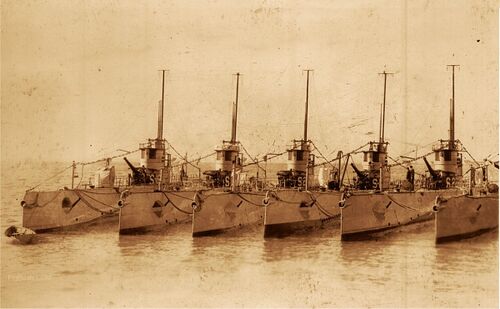
S-2 (Lake design built at Lake Torpedo Boat Company)
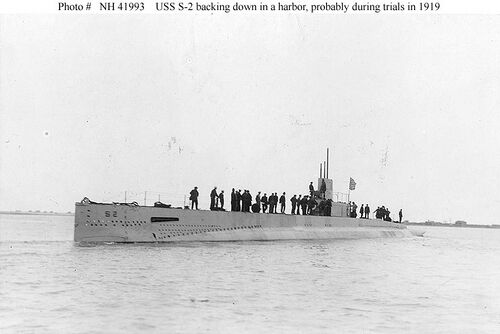
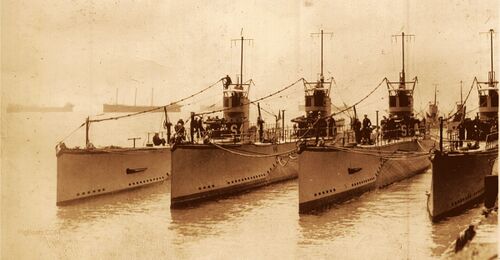
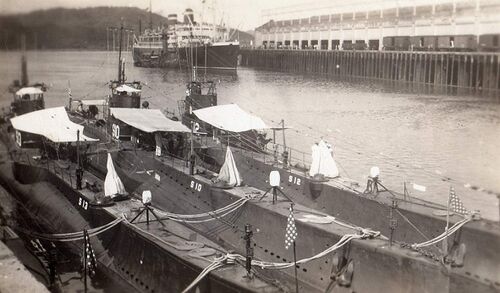
S-14 through S-17 (Government design built by Lake Torpedo Boat Company)
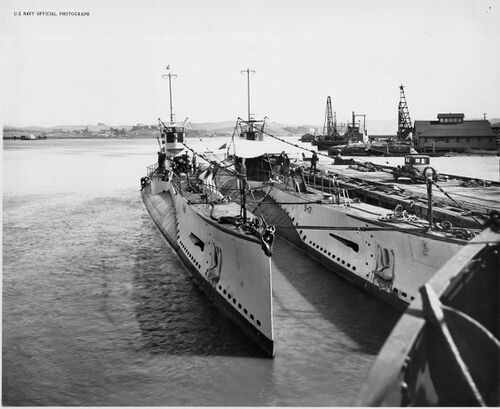
S-30 through S-41 (EB design built at Bethlehem San Francisco)
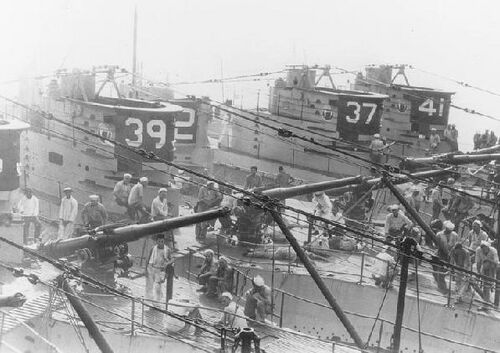
S-42 through S-47 (Modified EB design built at Bethlehem Quincy)

S-48 through S-51 (Modified Government design built by Lake Torpedo Boat Company)
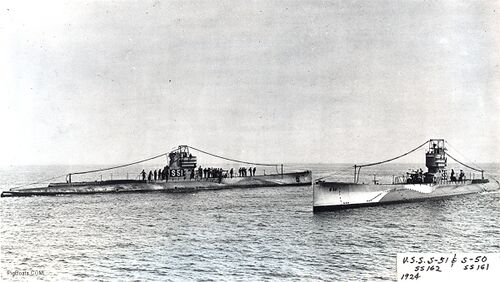
S-class general and group photos
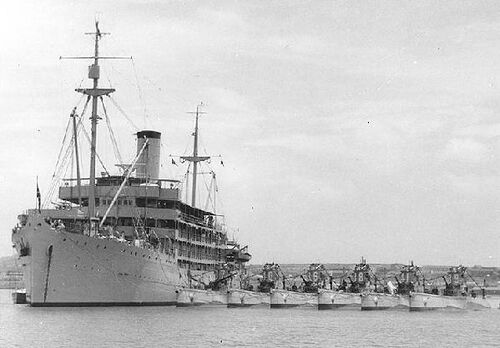
Page created by:
Ric Hedman & David Johnston
1999 - 2023 - PigBoats.COM©
Mountlake Terrace, WA, Norfolk, VA
webmaster at pigboats dot com
